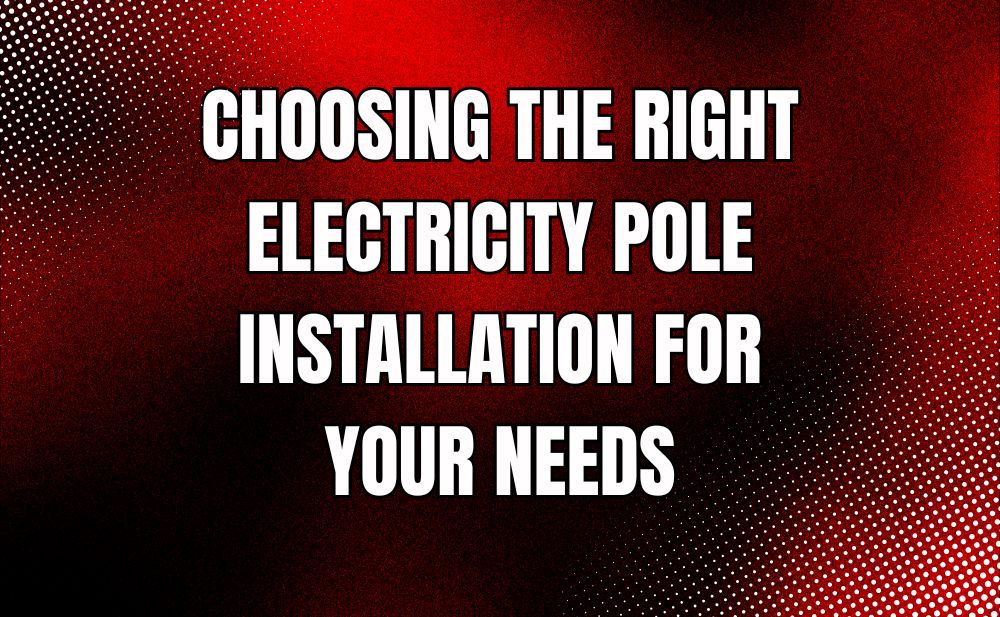When it comes to electricity pole installation, making the right choice is crucial for safety, functionality, and longevity. In Australia, electricity poles must comply with local regulations and withstand varied environmental challenges, from intense heat to unpredictable storms. Whether undertaking a residential, commercial, or industrial project, understanding your options will help ensure a successful power pole installation.

Understanding Your Electricity Pole Installation Options
Electricity poles come in various materials, each suited to different applications. The most common options include:
1. Timber Poles
Timber poles have been a traditional choice for power pole installation in Australia due to their cost-effectiveness and availability. Treated hardwood poles can last several decades and blend naturally into rural landscapes. However, they may require regular inspections for decay and damage from termites.
2. Concrete Poles
Concrete poles are durable and resistant to environmental factors such as fire, making them an excellent choice for bushfire-prone areas. They are ideal for both residential and commercial projects but can be heavier and more expensive to install than timber options.
3. Steel Poles
Steel poles are lightweight, strong, and versatile. They are commonly used in urban areas for their modern appearance and low maintenance needs. However, they can corrode over time if not properly treated, especially in coastal regions.
4. Composite Poles
Composite poles are a newer option, combining materials like fibreglass and resin. They are lightweight, corrosion-resistant, and suitable for harsh environmental conditions. Their higher initial cost is often offset by reduced maintenance requirements over time.
Factors to Consider When Choosing an Electricity Pole
To select the right electricity pole for your needs, consider the following:
1. Location and Environment
The geographical location of your project will influence your choice. For example, fire-resistant poles are essential in bushfire-prone areas, while corrosion-resistant materials are ideal for coastal regions.
2. Load Requirements
Determine the weight and type of power lines or equipment the pole will support. Commercial and industrial projects often require poles that can handle heavier loads compared to residential installations.
3. Compliance with Australian Standards
Ensure your chosen electricity pole meets all relevant Australian Standards and local council requirements. This guarantees safety and reduces the risk of future legal complications.
4. Budget
While initial costs are important, factor in the long-term expenses of maintenance and replacement. A higher upfront investment in durable materials may save money over time.
Your Trusted Partner in Power Pole Installation Solutions
Langshaw Electrical is a trusted name in the field of electricity pole installation in Australia. Our team of experienced professionals ensures that every power pole installation is carried out with precision, adhering to all safety standards and regulations. We offer tailored advice to help you select the best pole for your specific requirements, ensuring a reliable and cost-effective solution.
Our team of level 2 electricians are ready to help you choose the perfect power pole for your project. Learn more about the services listed on our website and contact us for your power pole installation requirements. Let us help you power your future with confidence.

